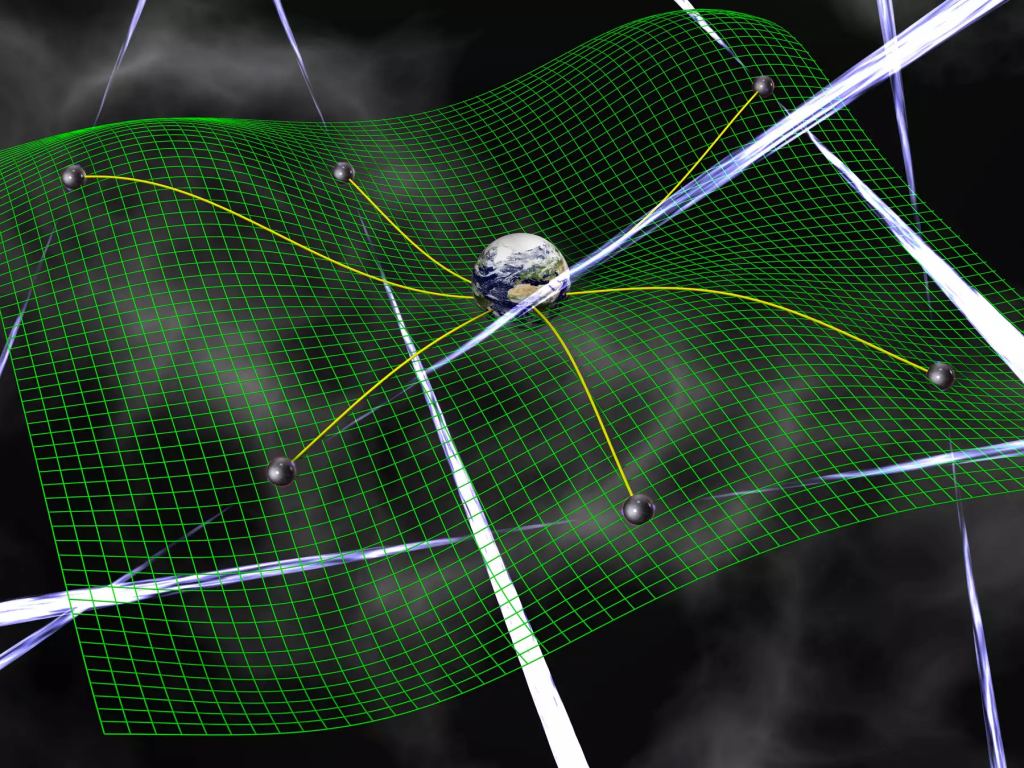The gravitational wave background was first detected in 2016. It was announced following the release of the first data set from the European Pulsar Timing Array. A second set of data has just been released and, joined by the Indian Pulsar Timing Array, both studies confirm the existence of the background. The latest theory seems to suggest that we’re seeing the combined signal of supermassive black hole mergers.
Gravitational waves are ripples in spacetime caused by violent processes in the Universe. They were predicted by Einstein back in 1916 as part of his General Theory of Relativity. It is thought the waves are generated by accelerating masses such as merging black holes, colliding neutron stars and the like. They are expected to be able to travel through space, largely unimpeded by anything in their way. Their existence was first detected in September 2015 by the Laser Interferometer Gravitational-Wave Observatory, or LIGO. They are thought to have come from a gravitational merger between tow black holes 1.3 billion light years away.

The gravitational wave background is a random distribution of gravity waves that permeate the Universe and it is this that was detected in the European Pulsar Timing Array. The background is thought to occur from multiple, superimposed gravity waves generated from supermassive black hole binaries for example. The observation of the gravity wave background can give us a great opportunity to study the Universe at large much like the Cosmic Background Radiation. The achievement would not have been possible if it wasn’t for the European Pulsar Timing Array, the Indian PTA, the North American Nanohertz Observatory and the Parkes PTA.

A pulsar timing array (PTA) consists of a network of galactic pulsars that are monitored and analysed to detect patterns in their pulse arrival times on Earth. Essentially, PTAs function as galaxy-sized detectors. While pulsar timing arrays have various applications, they are most well-known when employing an array of millisecond pulsars to detect and analyse the long-wavelength gravitational wave background.
The paper, authored by a team led by J.Antoniadis from the Institute of Astrophysics from Greece explore the implications of the common low frequency signal observed int he latest data released from the pulsar timing array systems. Assembling data from the four different datasets, the team look for a signal comprising only high quality data.
The conclusion was unmistakable, yet more evidence for a gravity wave background. Over time, and with more Pulsar Timing Array projects, the low frequency gravity wave background will become increasingly distinctive. The mission now is to interpret the details of all these signals to maximise the opportunity to explore the Universe in this new way.

